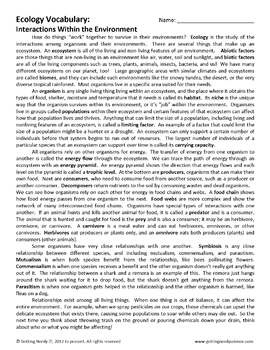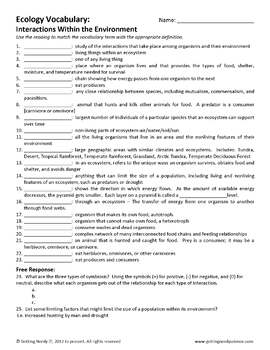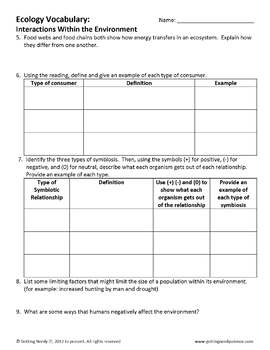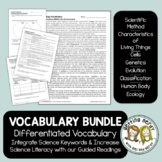Ecology Vocabulary - Differentiated Science Reading Passages & Questions
- Zip
- Google Apps™

Also included in
- Science terminology doesn't have to be overwhelming. Each of our integrated literacy activities includes a teacher-written, student-friendly reading that introduces new terminology in a fun and engaging way while providing differentiated options that can be given at the teacher's discretion. The reaPrice $28.50Original Price $34.45Save $5.95
Description
Science Literacy starts with accessible vocabulary. Our differentiated vocabulary lessons are perfect for teaching your students science terminology in a fun, engaging and differentiated way. Our readings are created using the same language for below and above level readers with differentiated questions. Students don't even need to know that they are receiving work that is different from their peers as they learn science terms.
WHAT'S INCLUDED IN THIS 1-2 DAY LESSON:
• Differentiated readings covering terms related to food chains, food webs (predator, prey, carnivore, omnivore, herbivore), symbiotic relationships, animal populations, carrying capacity, and limiting factors
• DIGITAL GOOGLE CLASSROOM links to all items listed above which can be easily converted to Microsoft School with directions provided or altered to fit your school’s personal learning management system
STUDENTS WILL:
• Read the assigned reading and answer the appropriate questions
SEE HOW THIS LESSON ALIGNS WITH THE NGSS, TEKS or GSE
Because we have created many of our own graphics or have purchased licenses to other graphics with permission, we cannot offer our resources in editable format unless otherwise stated.
TERMS OF USE (TOU):
All rights reserved by GETTING NERDY®️.
• This product is to be used by the original purchaser only
• Intended for classroom and personal use only
• Copying for more than one teacher, classroom, department, school, or school system is prohibited.
• This product may not be distributed or displayed digitally for public view
Failure to comply is a copyright infringement and a violation of the Digital Millennium Copyright Act (DMCA). Clipart and elements found in this PDF are copyrighted and cannot be extracted and used outside of this file without permission or license.
Ecology Vocabulary Reading © 2012 to present GETTING NERDY®️ All Rights Reserved






